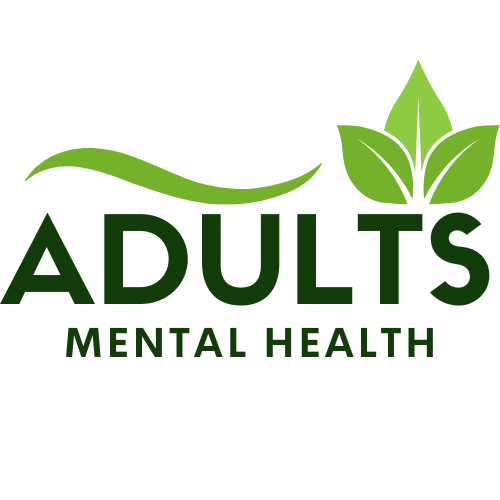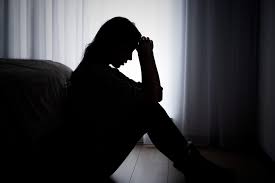Depression vs. Sadness: Understand the Crucial Differences
Introduction: Understanding Your Emotions
We all feel down from time to time, but how can we distinguish a bad mood from danger signs such as depression? The difference between depression vs sadness is an important one for mental health awareness. While sadness is a common human emotion, depression is a clinical condition that can be debilitating. This article explores these differences, helping you identify when to seek help, whether for yourself or a loved one.
What Is Sadness?
Sadness is a normal human emotion often triggered by specific events like disappointment, loss, or a breakup. It typically fades with time or when circumstances improve. While sadness may cause tearfulness or withdrawal, it generally doesn’t disrupt long-term functioning.
Characteristics of Sadness
- Situational: Tied to a specific event or situation.
- Mild: Symptoms are low-intensity and don’t prevent daily activities like work or hobbies.
- Responsive to Guidance: Talking to a friend or practicing self-care can lift your mood.
Example: If you miss a loved one, you may cry but still go to work. Sadness ebbs and flows, often resolving without professional help.
What Is Depression?
Depression, or major depressive disorder, is a mental health condition that goes beyond sadness. It involves persistent low mood, loss of interest, and physical or cognitive symptoms that impair daily life. Unlike sadness, depression may arise without a clear trigger and can last for weeks, months, or longer.
Key Symptoms of Depression
- Persistent feelings of hopelessness or emptiness.
- Loss of interest in activities once enjoyed.
- Fatigue, sleep disturbances (insomnia or oversleeping), or appetite changes.
- Difficulty concentrating, making decisions, or remembering.
- Physical symptoms like headaches or unexplained aches.
- Feelings of worthlessness, guilt, or, in severe cases, suicidal thoughts.
Real-Life Example: Sarah, a 32-year-old teacher, lost interest in work and withdrew socially. Despite no major life changes, she felt exhausted and hopeless for months. After seeking therapy, she was diagnosed with depression and began treatment.
Depression vs. Sadness: Core Differences
The distinction between depression and sadness hinges on duration, intensity, and impact on daily life. Here’s a comparison:
| Aspect | Sadness | Depression |
|---|---|---|
| Duration | Short-term, event-based | Persistent, often weeks or months |
| Trigger | Specific (e.g., loss, failure) | Often no clear cause |
| Impact | Minimal disruption to daily life | Significant impairment in functioning |
| Treatment | Self-care, support from loved ones | Therapy, medication, or both |
Why the Distinction Matters
Mislabeling depression as “just sadness” can delay treatment, while overpathologizing normal sadness can cause unnecessary worry. Understanding the difference empowers you to respond appropriately, whether through self-care or professional help.
Causes and Triggers
Sadness Triggers
Sadness is often linked to specific events:
- Loss of a loved one or pet.
- Relationship conflicts or breakups.
- Career setbacks or financial stress.
These environmental triggers typically align with the event’s severity.
Depression Causes
Depression may result from a combination of factors:
- Biological: Imbalances in brain neurotransmitters like serotonin.
- Genetic: Family history increases risk.
- Environmental: Chronic stress, trauma, or isolation.
- Mental and Emotional: Negative thinking or low self-esteem.
Example: Someone genetically predisposed to depression may develop it under chronic stress, even without a specific trigger.
When to Seek Help
Sadness often resolves with time or support, but depression may require professional intervention. Seek help if you or a loved one experience:
- Symptoms lasting more than two weeks.
- Inability to perform daily tasks (e.g., work or school).
- Thoughts of self-harm or suicide.
Actionable Insight: Contact a therapist, psychiatrist, or crisis hotline immediately if symptoms persist. Early intervention can prevent worsening mental health.
Treatment Options for Depression
- Therapy: Cognitive-behavioral therapy (CBT) helps reframe negative thoughts.
- Medication: Antidepressants balance brain chemistry.
- Lifestyle Changes: Exercise, sleep, and nutrition support recovery.
- Support Groups: Connecting with others fosters hope and understanding.
How to Support Someone Struggling
You can make a difference for someone experiencing sadness or depression:
- Listen Without Judgment: Let them express feelings without trying to “fix” them.
- Recommend Professional Support: Gently suggest therapy or medical help if symptoms are severe.
- Offer Practical Help: Assist with tasks like cooking or errands.
- Be Patient: Recovery from depression takes time.
Case Study: John noticed his friend Mia was withdrawn. Instead of telling her to “snap out of it,” he encouraged her to seek counseling. Mia received therapy and regained her confidence.
Myths and Misconceptions
- Myth #1: Depression is just intense sadness. Depression involves complex emotional, physical, and cognitive symptoms beyond sadness.
- Myth #2: You can “pull yourself out” of depression. Depression often requires professional treatment, not just willpower.
- Myth #3: Sadness always leads to depression. Many people experience sadness without developing clinical depression.
Conclusion: Take Control of Your Mental Health
Understanding the difference between depression vs sadness helps you recognize when normal emotions become a medical concern. Sadness is temporary and event-related, while depression is persistent and disruptive. Recognizing red flags enables action—whether practicing self-care for sadness or seeking therapy for depression. You’re not alone, and mental health matters.
Call to Action: Have you or someone you know experienced sadness or depression? Share your thoughts in the comments or visit our mental health resources page for more information. Sign up for our Well Family newsletter for tips on self-care and emotional health.
FAQs
1. What is the difference in duration between sadness and depression?
Sadness is temporary, often resolving in days or weeks. Depression lasts two weeks or longer without treatment.
2. Can sadness turn into depression?
While sadness doesn’t always lead to depression, chronic or intense sadness, especially with risk factors, may contribute to it.
3. What should I do if I think I have depression?
Consult a mental health professional for evaluation. Therapy, medication, or lifestyle changes can help manage symptoms.
4. Are there self-help strategies for sadness?
Yes, journaling, exercise, talking to a friend, or mindfulness can help. If symptoms persist, seek professional advice.
5. How can I tell if a loved one is depressed?
Look for signs like withdrawal, loss of interest, or changes in sleep and appetite. Encourage open communication and professional help if needed.

